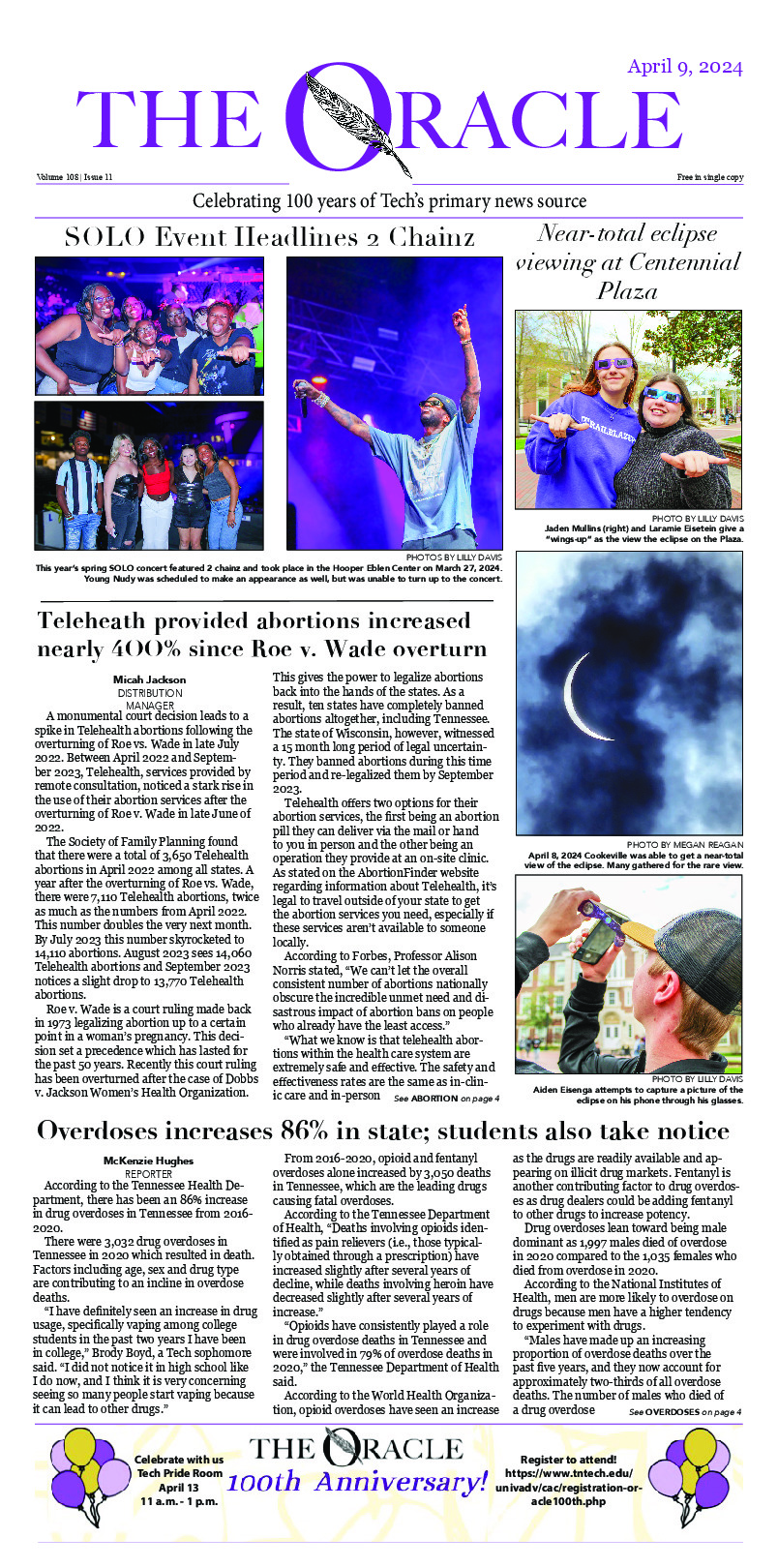Nashville’s Frist Center for the Visual Arts will conclude its exhibition “Phantom Bodies” Sunday, Feb. 14, offering visitors a last chance to immerse themselves in its diverse collection of works representing the human aura’s fleeting presence.
“The exhibition includes artworks that indicate such presences through surrogates: shadows, imprints, or masks; objects as memento mori; or forms of pure energy,” explains the Frist Center’s pamphlet for the exhibition. The pamphlet goes on to mention that the name “Phantom Bodies” was chosen to reference the medical phenomenon known as phantom limb syndrome, a condition with which patients who have lost limbs through trauma or surgery experience pain or other sensations in the area of the missing limb.
Ellen Pryor, the Frist Center’s director of communications, further explained the allusion to phantom limb syndrome in the title, which is used for aiding the art in evoking notions of human presence versus human absence.
“The premise of the exhibitory name includes the idea that the corporeal body can be simultaneously absent and present. Have you heard of phantom limb syndrome? People continue to feel sensation in a part of their body that isn’t there anymore. So you walk through this exhibition and get to see the human aura represented as both there and not there at the same time,” Pryor explained. “Mark Scala developed this idea of simultaneous presence and absence to bring that idea to visitors.”
With dozens of installations ranging from altered vintage photographs and videos to highly detailed sculptures and intricate mechanical collections, there is an array of objects and color, each piece more or less intended to signify the ghostly embodiment of unknown individuals whose humanity is never fully revealed. One such piece, a sculpture titled “Pupil” by Elizabeth King, greets visitors as soon as they enter the exhibit. King uses a combination of hyper-realistic porcelain and wood carving to embody her own self-portrait in a miniature humanoid, described “like a marionette with no strings.”
Another work, by Christian Boltanski, known as “Untitled (Reserve),” is a combination of blurred yearbook portraits from a girls’ school in Vienna shortly before the Nazi invasion. An accompanying stack of children’s clothing on the floor symbolizes the persecuted Jewish children of World War II, whose humanity was wiped out without a trace.
In one room, a video titled “Isolde’s Ascension,” plays on a vertical screen, which unfolds with a woman’s body rising from a dark blue pool of water lit in the center by sunlight. The work plays with notions of spirituality and love after death. In describing his interpretation after having studied the piece, security guard Corrigan Campbell mentioned how this piece stood out to him.
“This is really a full view of–how should I say it—it’s your interpretation of life, death, and life after death … it’s not really about happiness or joy. It’s about loss and death, and you should see that one I call “the blue room.” The lady ascends from life to death, and into the afterlife. So that’s really what this part of the exhibit is about: death, violence and life after death,” Campbell said.
Conversely, a rather bright photogram by Adam Fuss, “Untitled,” displays an almost X-ray-like relief of an infant laying in a light, shallow pool, with its inner body shown in dark relief. The photo is made from a novel film material called Cibachrome. Local Vanderbilt pledges Nicolette Granata and Jason Vincze gave their first impression of the photograph.
“I kind of see, as opposed to it just being a photo, it truly captures the moment,” remarked Vincze.
“The head is like, turned to the side, but it’s kind of facing us. I think it’s very powerful, since it’s an infant. So simple. It invokes life without needing to explain,” said Granata, when asked what she thought the artist is conveying through her work.
The entire gallery is loosely divided into four sections, or themes that collectively help express the artists’ attempts to humanize the dehumanized subjects. These themes include “Objects and Absence,” “Violence, Empathy and Erasure”, “Sublimation” and “The Mind-Body Problem.”
“Phantom Bodies: The Human Aura in Art” is the third and final installment of a three-part series developed in part by The Frist Center’s Curator, Mark Scala, and others. The two previous exhibitions included “Fairy Tales, Monsters and the Genetic Imagination” in 2012 and “Paint Made Flesh” in 2009.
“I think if it’s your charge in life to help curate art like this, it helps people to understand how to think about it…It behooves us to put ourselves in a frame of mind to interpret the meaning,” Pryor said.


